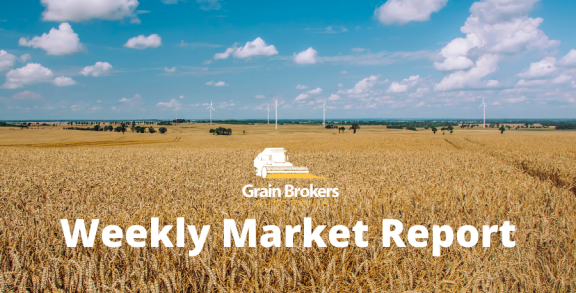
China exports outperformed expectations, and import growth languished in 2021, leading to a record trade surplus for the calendar year, despite the ongoing issues around the global COVID-19 pandemic. Statistics released by the General Administration of Customs (GAC) last Friday also revealed a record trade surplus for December, with imports down dramatically month-on-month.
Trade between Australia and China stood at US$231.2 billion in 2021, accounting for just 3.82 per cent of China’s total foreign trade, which exceeded US$6 trillion for the first time. Imports from Australia in December 2021 came in at US$11.4 billion, down 13.0 per cent from US$13.07 billion in November. But imports from Australia for the whole year reached $164.8 billion, up 40.0 per cent on the value in 2020.
One commodity that contributed to China’s record surplus was soybeans. China is the world’s biggest importer of soybeans, but declining demand from the livestock sector saw annual imports decrease for the first time since 2018. China imported 96.52 million metric tonne in 2021, down 3.8 per cent from a record 100.33MMT in 2020. A rapid recovery in China’s pig herd after the devastation caused by African swine fever in the preceding year was the major contributing factor to the record imports in 2020.
But in 2021, pig supply overshot demand. The national herd now sits at a six-year high, 17 per cent higher than before the African swine fever outbreak. Additionally, Chinese crush margins were progressively eroded by the rising cost of imported soybeans, which forced domestic consumers to reduce purchases, particularly in the second half of the year. The soaring price of corn early in the year also led to an increase in the use of wheat in feed rations. This, in turn, decreased the demand for soybean meal as the protein content of wheat is higher than that of corn.
However, this trend turned around in the second half of the year. As the record domestic corn harvest ramped up, domestic prices fell, while global wheat prices continued to rise. This led to an uptick in soybean meal demand late in the year. This was reflected in the December customs data, with soybean imports rising 18 per cent compared to the same month last year to 8.87MMT.
Meanwhile, China’s food security drive will see domestic soybean production increase by as much as 40 per cent over the next four years. Chinese production fell 16 per cent to 16.4MMT off 8.4 million hectares last year, with farmers turning to corn as a more profitable alternative. But the Ministry of Agriculture and Rural Affairs has set a production goal of 23MMT by the end of 2025 in its latest five-year plan. The ongoing trade tensions between China and the United States is said to be a key driver of the initiative.
China is at the mercy of global exporters with more than 86 per cent of annual soybean demand imported, predominantly from just two suppliers, Brazil and the United States. The latest China Agricultural Supply and Demand Estimates pegged China’s imports at a record 102MMT for the 2021/22 crop year (October to September). Domestic consumption is forecast at 118.08MMT.
According to the five-year plan, the approach to increasing soybean production will be threefold. China will increase the planted area by cultivating land specifically for soybeans, it will expand the existing soybean-corn rotation programmes, and lastly, it will concentrate efforts to raise yields via breeding programs and improving crop hygiene.
China’s food security goals are extensive and include producing 95 per cent of domestic pork requirements. This is quite ambitious for a country that consumes around 50 per cent of global production. It also has targets of 100 per cent self-sufficient in poultry meat and eggs, producing 85 per cent of the country’s mutton and beef requirements and meeting 70 per cent of dairy-based demand with domestic production.
Domestic protein production goals of this magnitude auger well for global demand for feed grains such as soybeans, corn, wheat, barley and sorghum. However, China’s agriculture ministry announced last week that reduced demand from both the industrial and feed sectors would lead to a reduction in corn consumption in the 2021/22 crop year.
The latest CASDE update pegged corn consumption at 287.7MMT, down from 290.7MMT in December. Feed sector demand is seen 1MMT lower at 186MMT, and industrial use is estimated to be down 2MMT to 80MMT. High domestic corn prices are said to be the main reason, with imported grains the potential beneficiary. Corn production remains unchanged at 272.55MMT off 43.324 million hectares.
China has resumed sales of state-owned wheat with 506,568 metric tonne selling at auction on January 5. The stocks were reportedly from the 2014 and 2015 seasons, so the outturn quality will be interesting. The auction was only open to wheat flour milling companies and sold at an average price of 2,707 yuan (AU$590) per metric tonne. According to the auction notification, the purchased wheat must be processed by the buyer and cannot be resold.
This is the second auction of state wheat reserves since the 2021 wheat harvest, with 891,938 metric tonne selling to both flour millers and stockfeed consumers in October last year. This sold at an average price of 2366 yuan (AU$515) per metric tonne, which was actually lower than the domestic cash market at the time.
China’s grain buying binge over the last couple of years, coupled with supply constraints in the world’s leading grain-producing areas, have resulted in tightening supply-demand balance sheets and soaring prices. The Chinese government wants to curb imports, but growth in grain production isn’t keeping pace with demand. As long as China continues to focus on self-sufficiency in meat production, buoyant import demand is inevitable.
Call your local Grain Brokers Australia representative on 1300 946 544 to discuss your grain marketing needs.





